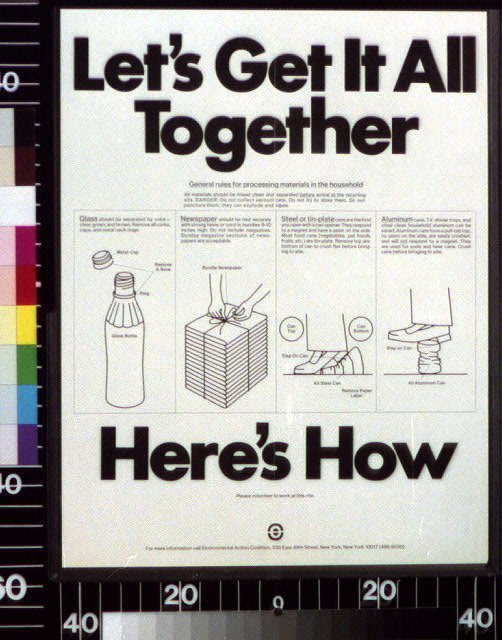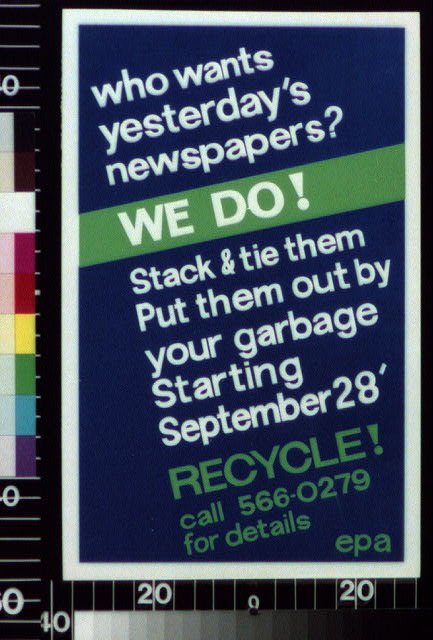The Problem with Recycling
& some solutions: what to do when recycling doesn’t cut it anymore


& some solutions: what to do when recycling doesn’t cut it anymore
A plethora of articles have been published over the last few years, explaining how our collective recycling efforts are somewhat pointless.
That’s a grim piece of information, especially for those who make a conscious effort to buy products specifically based on their recyclable packaging, and then make that effort to properly recycle (drying off and removing food completely, recycling based on local guidelines, etc.) on a regular basis.
First, let’s look at why our recycling isn’t getting recycled.
“Oregon is serious about recycling. Its residents are accustomed to dutifully separating milk cartons, yogurt containers, cereal boxes and kombucha bottles from their trash to divert them from the landfill. But this year, because of a far-reaching rule change in China, some of the recyclables are ending up in the local dump anyway.
In recent months, in fact, thousands of tons of material left curbside for recycling in dozens of American cities and towns — including several in Oregon — have gone to landfills.”
French Market Bag via Etsy
Question: is it the consumer’s responsibility to be conscious of what they’re purchasing, the producer’s responsibility to produce responsibly, or a combination of the two?
It’s a fine line: companies should have been held to much higher standards to begin with and since they were not, we’re left with the damage and the decision to take matters into our own hands.
With eco-friendly brands rising to the occasion and presenting us with better options, we’re able to research and make well-informed purchases, though not everyone has the privilege to shop ethically and sustainably.
If this is all we can do, I think that’s a great start.
We should be challenging brands to do better and provide us with responsibly made products: brands shouldn’t be expecting the consumer to do all of the work. (And we shouldn’t be expecting perfection from individual to individual, either.)
There’s only so much we can do: most of that being reusing the things we buy, taking excellent care of our belongings, passing them along to friends or family, or selling them when we’re done as opposed to sending dilapidated products to the landfill via donation centers, and recycling whatever is recyclable.
Illustration via Conscious Closet Blog.
“Americans recycle roughly 66 million tons of material each year, according to the most recent figures from the Environmental Protection Agency, about one-third of which is exported. The majority of those exports once went to China, said David Biderman, the executive director of the Solid Waste Association of North America, a research and advocacy group.
But American scrap exports to China fell by about 35 percent in the first two months of this year, after the ban was implemented, said Joseph Pickard, chief economist for the Institute of Scrap Recycling Industries, a trade group.”
“It’s a huge concern, because China has just been such a dominant overseas market for us,” Mr. Pickard said. In particular, exports of scrap plastic to China, valued at more than $300 million in 2015, totaled just $7.6 million in the first quarter of this year, down 90 percent from a year earlier, Mr. Pickard said. Other countries have stepped in to accept more plastics, but total scrap plastic exports are still down by 40 percent this year, he said.
“There is a significant disruption occurring to U.S. recycling programs,” Mr. Biderman said. “The concern is if this is the new normal.””
If we’re gradually less and less equipped to send our recycling to be recycled, what are our options?
Purchasing less: recognizing that generally, what we have is enough, and we don’t always need more. Making wise purchases allow us to hold onto things and elongate their lifespan and prolong their trip to the landfill.
Purchasing reusable: It’s understandable that not everything we need to buy at the grocery store will come in reusable packaging. What are our options, then? Bringing our own produce bags, tote bags, containers for bulk goods, and avoiding single-use plastics as often as possible. This isn’t always affordable for everyone, which is where this gets tricky. Another option: contact and petition your local grocery stores to stock better options. Present them with current issues surrounding rising climate temperatures due to food waste and landfills full of toxic plastics, and challenge them to carry products that won’t contribute to this.
Do what you can: start small. Purchase a few less single-use-plastic-covered items at the store and instead, buy something from the bulk section or something in reusable packaging each time you shop. You likely won’t be able to overhaul your entire grocery run overnight, but starting somewhere attainable is a good touchpoint for making progress.
If stateside recycling centers don’t have the means to process recycling, and we’re unable to continue shipping it abroad, what’s our solution?











